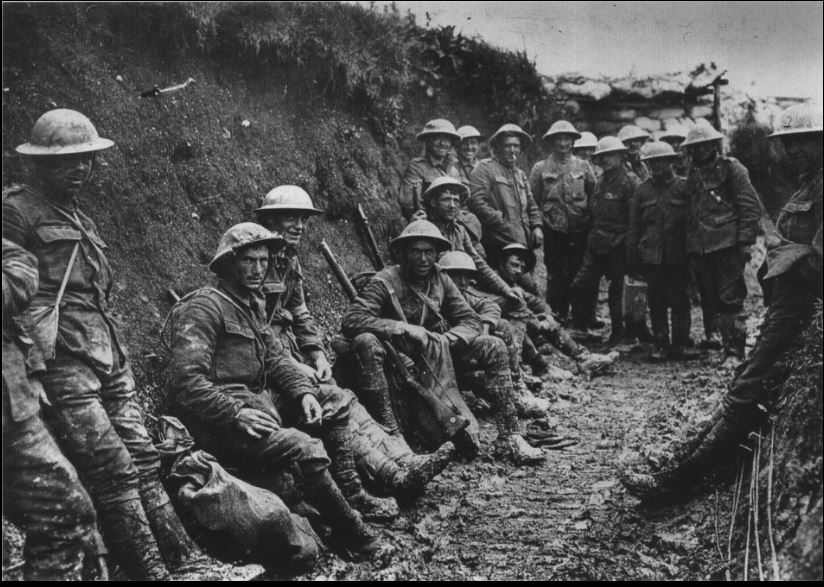A Fairy Tale from the Trenches: 1916

A Fairy Tale from the Trenches, 1916. Royal Irish Rifles rations party, First day of the Somme 1 July 1916
A Fairy Tale from the Trenches: 1916
I just reviewed that outstanding collection of 20th-century fairy sightings, Seeing Fairies, by Marjorie T. Johnson. While I was reading that book and looking at other examples of modern-day fairies, this bit of whimsy from the trenches appeared.
A FAIRY TALE FROM THE TRENCHES.
A remarkable example of light-heartedness in the trenches is afforded by a letter received by “E.W.D.’s” six-year-old daughter from his brother-in-law, John, which is reproduced in the London “Spectator.” The soldier writer of this fairy story says:— “You know “‘or’nery” people who don’t know nuffin and who think reason explains everything would just tell you the reason why most bullets don’t hit anybody is just that they miss ’em. But people who really understand—I mean people who have enough imagination to get up in their dreams and go out and see the fairies dancing on the dewy sward when the sunbeams twinkle on the crystal globules—these people know better. And I can tell you just how it is.
“You see, the fairies have eyes like marigolds** and as keen as eagles’. They see ten thousand times as quick as mortals do, and they move just as speedily as thoughts do. They see the bullets coming out of the rifles; and as it comes each bullet is bestridden by a fairy, who tweaks its nose and guides it harmless along, and the fairy sings sweetly all the time.
“That is why, when a bullet whizzes past your head you hear it humming like a bee, or droning like a bumblebee, or maybe whistling or whining or singing. But sometimes you don’t even hear that, and yet the bullet doesn’t hit you. You just hear it pass with a breathing whisper or a gusty noise. That is when no fairy has seen it in time to get astride and guide it, but all the fairies near a soldier just gather round and blow it past.
“Sometimes the bullet gets so white hot on its way that the fairy has to jump off, and then perhaps somebody gets hurt, so now all the fairies are getting asbestos pants for their spring costumes. Don’t you think that is jolly?”
Auckland [NZ] Star, 23 June 1916: p. 8
Most awfully jolly. The “light-heartedness in the trenches” probably played well on the home front and to a six-year-old niece. Who does not want to protect children from the realities of war? (The censors also would not have passed any frank talk of casualties.) In hindsight this jolly tale seems utterly horrible. On 24 June, 1916 Commander-in-Chief Haig ordered the bombardment of German positions near the Somme. The Battle of the Somme began 1 July 1916, with over 18,800 British soldiers killed that day. Was the man who told this fairy tale among them?
**Putting on my Relentlessly Informative cap, I believe that the “eyes like marigolds” refers to the use of those flowers as a cure for bad eyes and even blindness, although it may merely suggest magical golden eyes.
Thoughts on marigold eyes or the identity of E.W.D. or his brother-in-law John?
Chriswoodyard8 AT gmail.com
Chris Woodyard is the author of The Victorian Book of the Dead, The Ghost Wore Black, The Headless Horror, The Face in the Window, and the 7-volume Haunted Ohio series. She is also the chronicler of the adventures of that amiable murderess Mrs Daffodil in A Spot of Bother: Four Macabre Tales. The books are available in paperback and for Kindle. Indexes and fact sheets for all of these books may be found by searching hauntedohiobooks.com. Join her on FB at Haunted Ohio by Chris Woodyard or The Victorian Book of the Dead. And visit her newest blog, The Victorian Book of the Dead.
